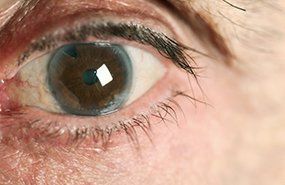Eye Diseases Linked to Diabetes and How to Prevent Them
- By Admin
- •
- 08 Jan, 2018

If you are one of the just over 30 million Americans who suffer from diabetes, then it is important to know that your chronic health problem makes you more susceptible to diabetic eye disease. Diabetic eye disease is not just one disease, but a term describing a group of eye diseases.
Read on to learn more about the symptoms of these eye diseases and how to prevent them.
Diabetic Retinopathy
Diabetic retinopathy is the most common cause of blindness among diabetic adults of working age. This condition occurs when the blood vessels in your retina become damaged due to the effects of high blood sugar. While you may experience no symptoms during the early stages of this vision problem, as the disease progresses, you may notice eye floaters, blurry vision and/or dark spots in your vision.
While diabetic retinopathy is not always preventable, steps you can take to prevent it include keeping your blood sugar, blood pressure and cholesterol at healthy levels. You should also avoid smoking.
Diabetic Macular Edema
Diabetic macular edema is a complication that can occur if you don't seek treatment for diabetic retinopathy. This condition occurs when there is swelling in an area of your eye called the macula that causes the blood vessels in it to leak.
Symptoms of diabetic macular edema are similar to those of diabetic retinopathy, although double vision or even blindness can occur when this disease is left untreated.
The key to preventing diabetic macular edema is seeking treatment for diabetic retinopathy early on.
Glaucoma
Diabetics are twice as likely as those who do not suffer from diabetes to develop glaucoma. Several types of glaucoma exist, and diabetics are prone to the development of open- and closed-angle glaucoma and a more rare form of glaucoma called neovascular glaucoma, especially if they already suffer from diabetic retinopathy.
Glaucoma increases the pressure in your eye, which puts pressure on your optic nerve. This can lead to optic nerve damage and, in advanced stages, blindness.
Some people experience no symptoms when they first begin developing open-angle glaucoma. After this type of glaucoma becomes more advanced, permanent loss of peripheral vision is often the first symptom sufferers notice.
Symptoms of closed-angle glaucoma can occur very early in the development of this disease. These symptoms can include blurry vision, eye and head pain (often so severe it leads to nausea) and/or rainbow-colored circles around lights.
Neovascular glaucoma often has no symptoms, although some sufferers experience severe eye and head pain, sensitivity to light and/or loss of vision.
While not all cases of open-angle and closed-angle glaucoma are preventable, exercise has been shown to reduce eye pressure, which can help prevent and slow the development of this disease. The best way to prevent neovascular glaucoma is by preventing the diabetic retinopathy that it stems from.
Cataracts
Diabetics are 60 percent more likely to develop cataracts than the rest of the general population. Cataracts occur when the eye lens becomes clouded with protein deposits, which can lead to vision problems. While people without diabetes are typically good candidates for cataract lens replacement surgery, realize that diabetics with uncontrolled blood sugar are often not.
Cataract symptoms include double vision, sensitivity to light, clouded vision, blurry vision, double vision and/or colors appearing less vivid than they used to.
Two ways to help prevent cataracts are to wear sunglasses with 100 percent UVA and UVB protection and to eat a diet filled with plenty of antioxidants.
One of the most important ways to catch the development of diabetes-related eye disease is to obtain a full eye exam at least once a year. Contact the staff at Hummel Eye Associates to schedule an appointment with one of our eye care professionals.
- Mon - Fri
- -
- Sat - Sun
- Closed
